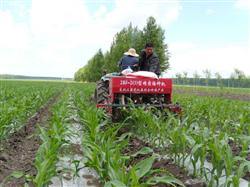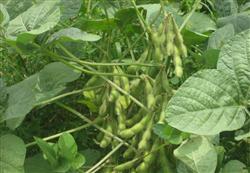Drought-resistant cultivation techniques of Spring sowing Maize

There is a serious drought in winter and spring this year. Since the beginning of spring, there has been little rainfall in most parts of our province, which has brought adverse effects on the production of spring sowing corn. In view of the current situation, the drought-resistant cultivation techniques of spring sowing maize are put forward for reference. 1. Select drought-tolerant and high-yielding varieties. The selection of varieties with good drought resistance and high yield according to local conditions is one of the effective measures to improve the yield of maize in dryland.? 2. Suitable for sowing in rain. After rainfall, the soil water content will increase, so we should seize the opportunity to sow seeds after rainfall in order to achieve the purpose of drought resistance, disaster reduction and yield increase. huh? 3. The application of half-mulch rainwater-harvesting, water-saving and fertilizing technology. In this technique, plastic film is covered between maize plants, or corn is planted (sown) on both sides of plastic film after plastic film is covered, so as to achieve the goal of water saving and high yield. Compared with seedling cultivation in open field and traditional open field direct seeding corn, this technique saves water by 16.2% and 12.9% respectively. The specific methods are as follows: (1) apply bottom fertilizer and bottom water in ditch. Before sowing or transplanting corn, dig a 20cm deep groove in the middle of the corn planting belt (build a water ridge at both ends of the ditch), apply 50kg of phosphate fertilizer, 10.5kg of urea, 1000 kg of raw manure and 500kg of water as base fertilizer and water in the ditch. (2) small ridges and double rows. After applying bottom fertilizer and bottom water to cover the soil, dig a ridge 0.6 feet above the ground and 1.2-1.5 feet wide at the bottom of the ridge. (3) cover the film with rain. After the accumulated rainfall of 20 mm or soaking rain for 3-5 days in spring, the ultra-micro film with a width of 1.2 to 1.5 feet was immediately covered on the ridge and pressed around with soil to keep the precipitation. (4) transplanting seedlings between membranes. Transplant corn seedlings at the edge of plastic film mulching and plant 2 rows per ridge. The planting specifications are narrow row spacing of 1.5 to 2.0 feet, plant spacing of 1.0 to 1.2 feet, and about 3600 plants per mu.
- Prev

Conservation Tillage techniques of Spring Maize
Corn is a high-yield crop, which requires a large amount of fertilizer and is also sensitive to medium and trace element fertilizers. Reasonable fertilization is necessary to meet the nutrient needs of corn in the whole growth period. According to the experiment, the production of 100 kg corn seed requires 2.5 kg of nitrogen, 1 kg of phosphorus and 2.1 kg of potassium. If you yield 500 kg of corn per mu, you need urea 3 per mu.
- Next

Spring sowing and fertilization hint: effective application of potassium to promote high yield of spring maize
Greedy green late maturity means that the soybean is still green branches and green leaves when it is ripe, the growth is exuberant, the grain is not full, but it is not a blighted pod. The main reason for greedy green late ripening is that the application of nitrogen fertilizer is too much or too late, resulting in prosperous growth, postponement of maturity and affecting yield. In order to prevent soybeans from becoming green and late ripening, it is necessary to.
Related
- The first cup of black tea in spring, the flavor and history of tea gardens in Kenya, Africa
- The computer can not only choose potatoes, but also grow tea rice. AI will grow winter oolong tea champion.
- It is not only the inflated tea bitten by insects, but also engraved with the four seasons tea in Beipu.
- The Oriental Beauty Tea Festival in Zhuxian County takes the stage at the weekend to experience the plus-size feast of oil tea.
- & quot; Oriental Beauty Tea & Exploration of Emei in Hsinchu, the hometown of quot;
- The new variety of strawberry "Tainong 1" dessert is the first choice with mellow aroma. Crimson gorgeous
- History of Tea in Taiwan: from Wild Inner Mountain to Export Tea Garden
- Two types of Taiwan Oriental Beauty Black Tea won the British three-Star Award for Childhood Tea Xiang Zhang Jiaqi changed from pilot to champion tea maker.
- Banana species and varieties: the planting history of Taiwan Xianren banana and dwarf banana is long, is banana disease resistant?
- Coffee planting Technology: Qianjie Coffee from Seedling to harvesting

